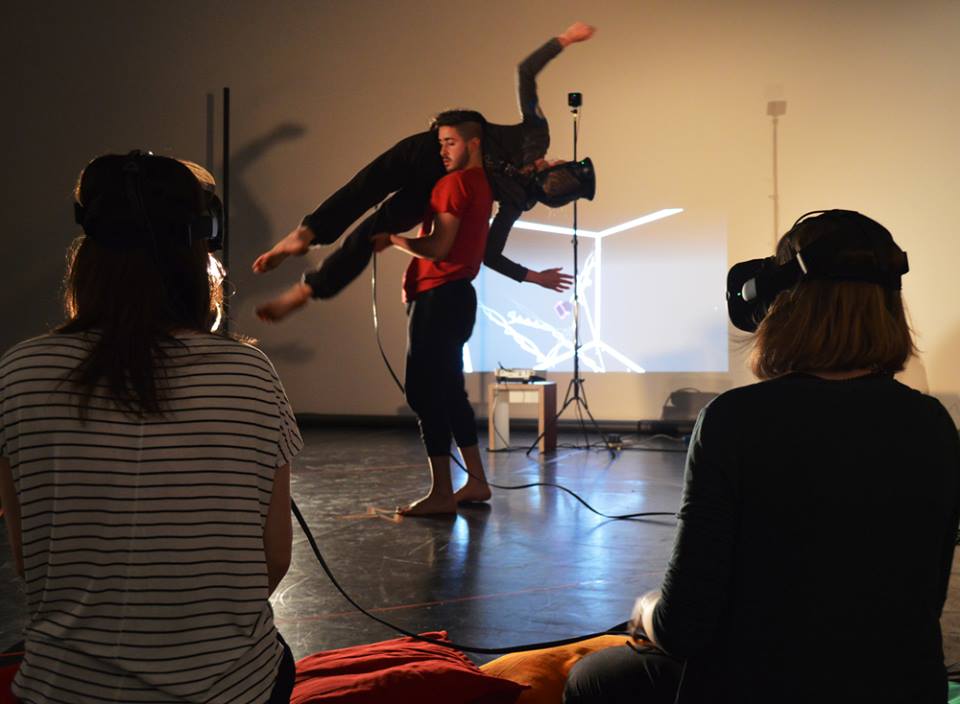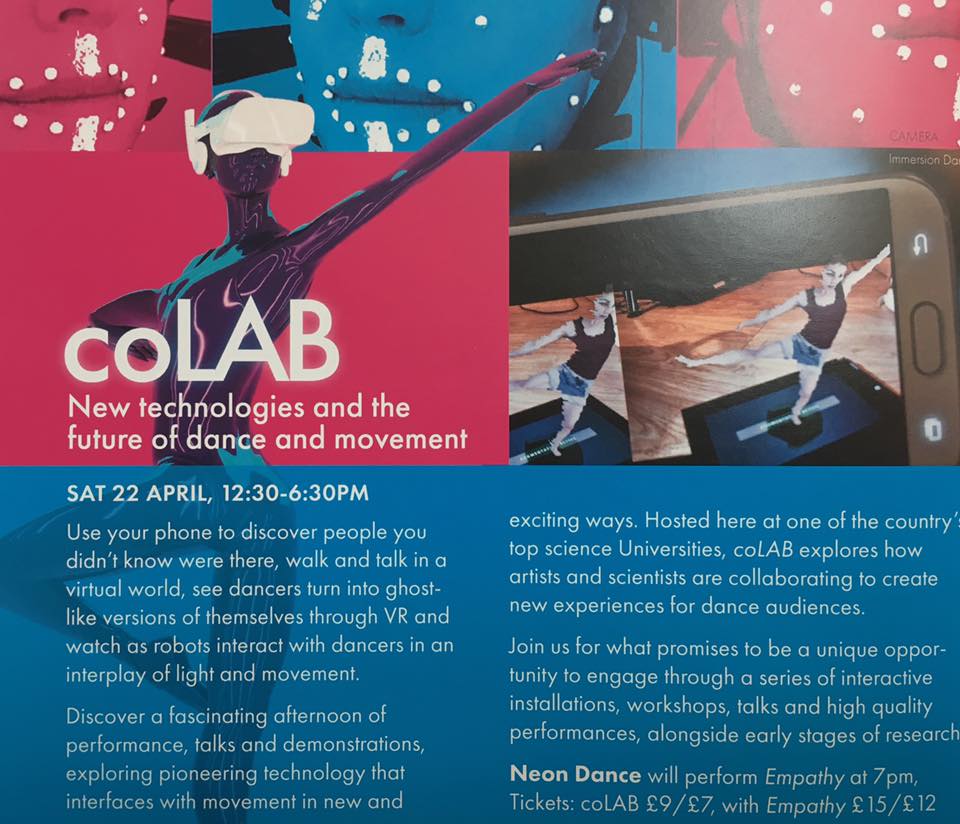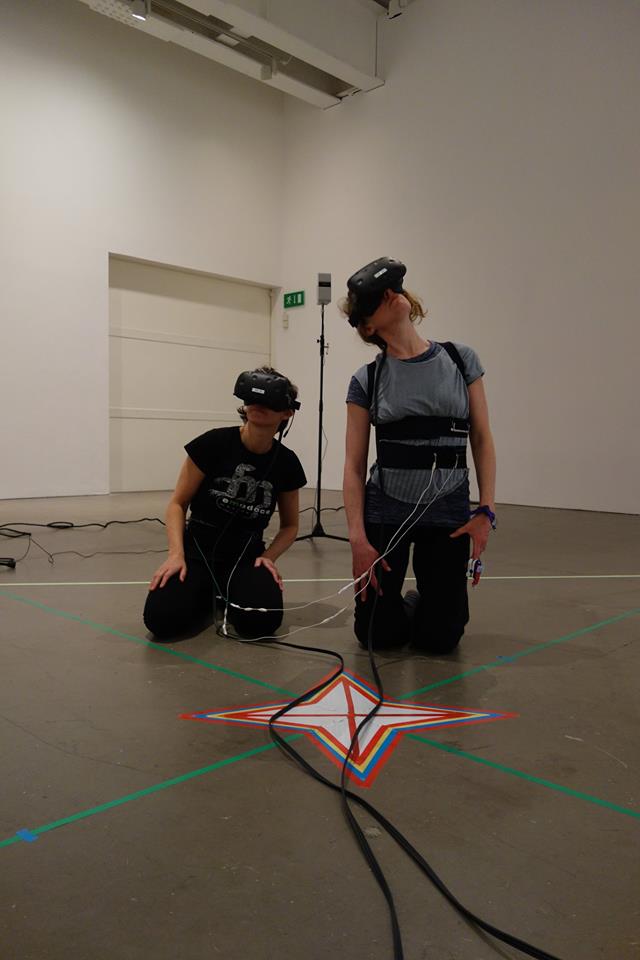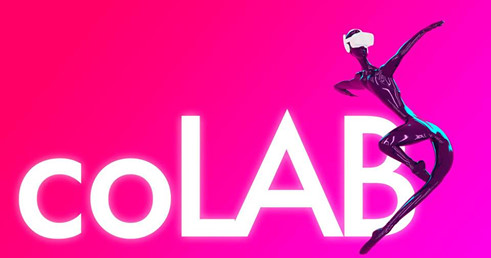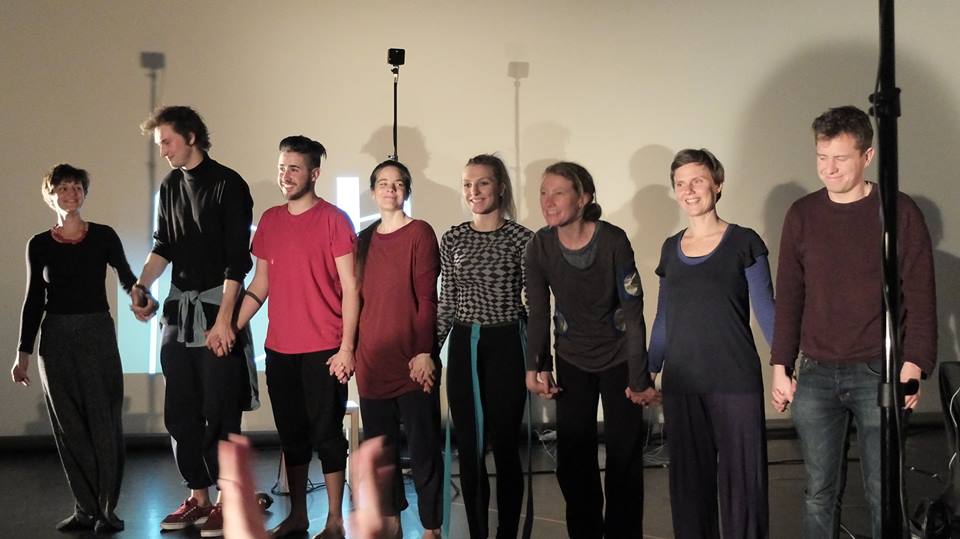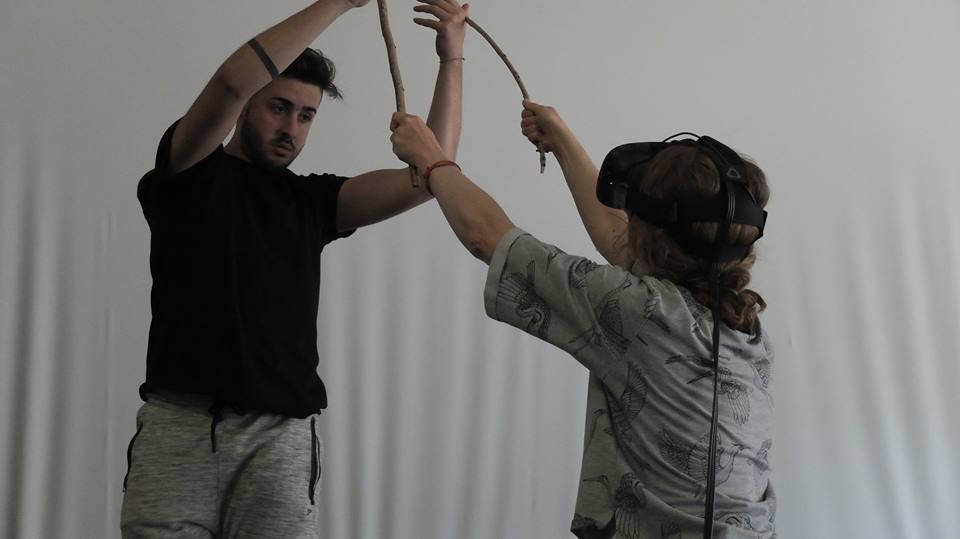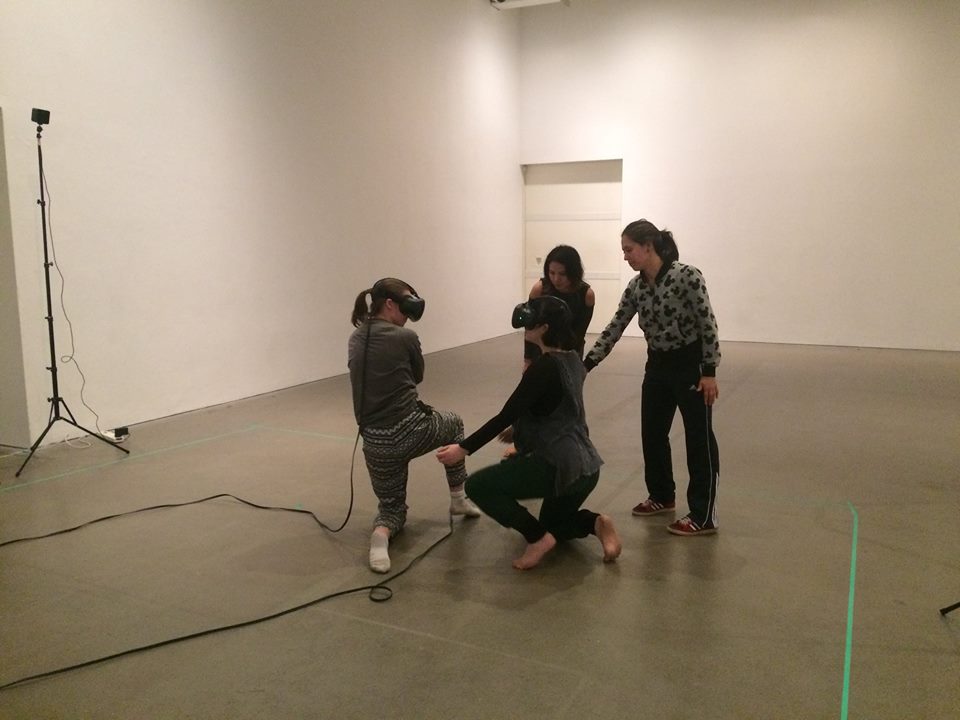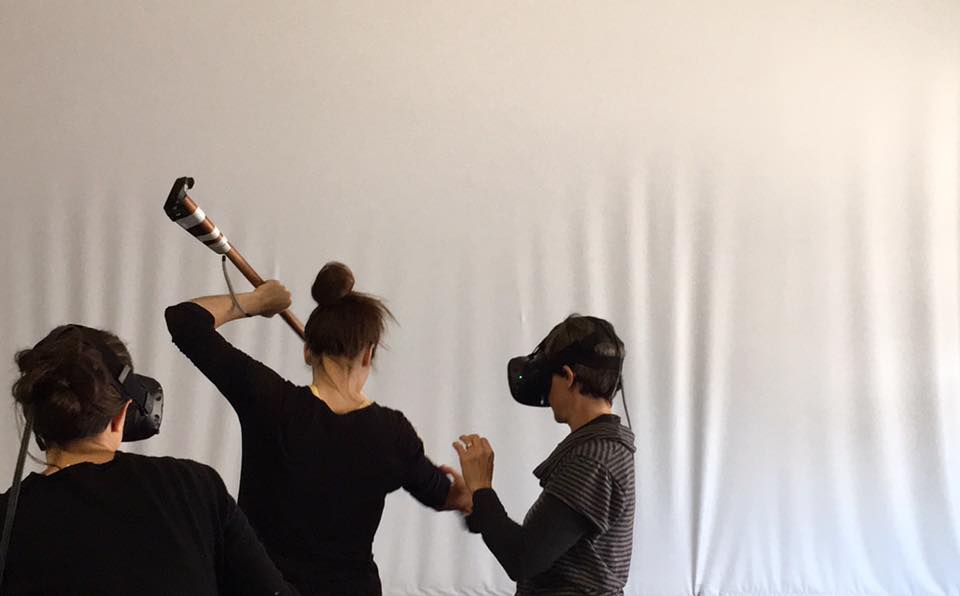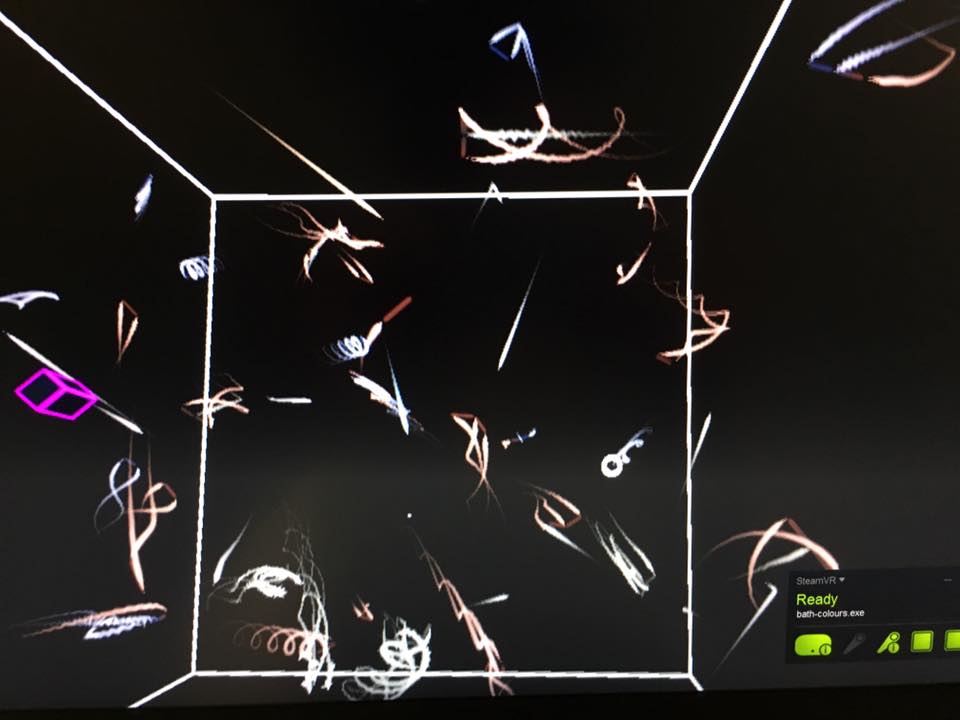Dance & VR – Lisa May Thomas
I worked as a dancer for Lisa May Thomas’ PhD research, a dance-led somatic approach to multi-person interactive VR framework, working across the departments of Drama and Computer Science at the University of Bristol. I participated in the research at Arnolfini Bristol (03/2016), at Bath Spa University (04/2016) and performed with her at Co-LAB: Dance and Technology at the Edge Art Gallery Bath. Now our season of spring residencies has come to a close, dance artist Lisa May Thomas tells us a bit about what she did during hers. The research that took place during the 6-day residency at Arnolfini in Gallery 3 started with two days of open labs for dancers who had applied with an expression an interest to work with virtual reality (VR). I am interested in what insight a dance-led approach can offer to VR, and how we might re-discover our bodies through VR experiences. The residency-development time took place over the subsequent 4 days. For 2 days we worked with non-visual sensory modalities (sound and touch) and with sonifying bio-feedback information (breath and pulse-rate) to find ‘bridges’ between real and virtual spaces, and how we can experience the bodies within them. Instead of a visual register, hearing touch or breath and identifying bodies as touch and sound became the anchors for embodied experience in the multi-person VR space. The remaining 2 days were spent playing with ‘nonhuman’ materials that I had brought into the space: a stick, some wire, a lot of thread, and some fabric. I was interested in how touching these objects would feel in the VR space and the ways in which there could be a sense of communication through the objects (between human bodies), between the virtual and real spaces – as movable, responsive, haptic architectures in the space. During the week we had two open studio sessions. The first was very much a play-space for people to come and play in VR and to talk with the researchers in the room and to test out some of the sensor technology that we had been developing; and the second as more of a performance sharing in which four dancers including myself took turns to journey into VR and to share our experience through movement and dialogue with the ‘onlookers’ who were invited into the space and into a supported VR experience (supported by the technology and through the presence and touch of the dancers and the materials in the space). Through the week I worked with several artist and researchers all with a different emphasis coming into the work: Becca Rose – artist, designer and educator who makes playful work at the intersection of folk-art, storytelling, and creative-technology. Lecturer at UWE. Joseph Hyde – Professor at Bath Spa University and composer specialising in electronic music and work which incorporates visual media, and a significant proportion in collaboration with contemporary dance. Alex Jones – music technician based looking at applications of spatial audio for creative purposes. And PhD/Post-Doctoral members of Glowacki Group, University of Bristol led by Dr David Glowacki as follows: Mike O’Connor – interested in bridging the gap between human intuition and simulation by creating methods for enabling researchers to explore 3d environment of the nano-scale; Robin Shannon – interested in exploring the use of virtual reality as a tool for discovering novel chemical reactions; Helen Deeks – developing a VR interface for biomolecular drug discovery, working alongside researchers in the field of Human Computer Interaction to understand how people experience chemistry in a fully three-dimensional virtual environment; Simon Bennie; and Rob Arbon. Dancers who participated in the labs: Isabelle Cressy, Silvia Gronau, and Ana Manuela Jara, Stephanie Scheubeck, Verena Schneider, Emma Louvelle, Elizabeth Dobson, Abi Price, Wina Lewis, and Helen Kirby. Dancers who participated in the residency week: Fernanda Munoz-Newsome, Isabelle Cressy, Verena Schneider, Silvia Gronau, and Ana Manuela Jara. Other artists involved in the residency week were: Elaine Robinson (artist), and Sarah Corbett (theatre-maker). Production support from Katherine Hall. The next steps for the project will be a short residency at Bath Spa University which leads into an event at Edge Arts at the University of Bath https://www.edgearts.org/whats-on/dance/colab-2/ More information will be posted onto my website http://www.lisamaythomas.co.uk/ I want to say a big thank-you to Arnolfini for this time in the awesome Gallery 3, and also to thanks all the other project funders involved: The Royal Society; The Leverhulme Trust; University of Bristol; Barbican Centre; Bath Spa University; Edge Arts and the University of Bath; Interactive Scientific; and At-Bristol. Lisa May Thomas a contemporary dance artist who works with dance and technology: She received her undergraduate training in Dance Theatre at Trinity Laban in London (1995) and MPhil in Performance from University of Bristol (2015-16). She has worked extensively with dance for the camera, and is now developing performance work with new technologies, specifically Virtual Reality (VR). She is currently researching a dance-led somatic approach to multi-person interactive VR framework, working across the departments of Drama and Computer Science at the University of Bristol. Her screen-dance work tours globally and has won awards (see http://www.lisamaythomas.co.uk/screenings-awards/). Her recent film-work ‘There is a Shipwreck in My Bones’ has been invited to exhibit later in 2017 at On Site Impromptus international dance video/film exhibition at Ming Contemporary Art Museum in Shanghai, China.RESIDENCY NOTES – LISA MAY THOMAS
